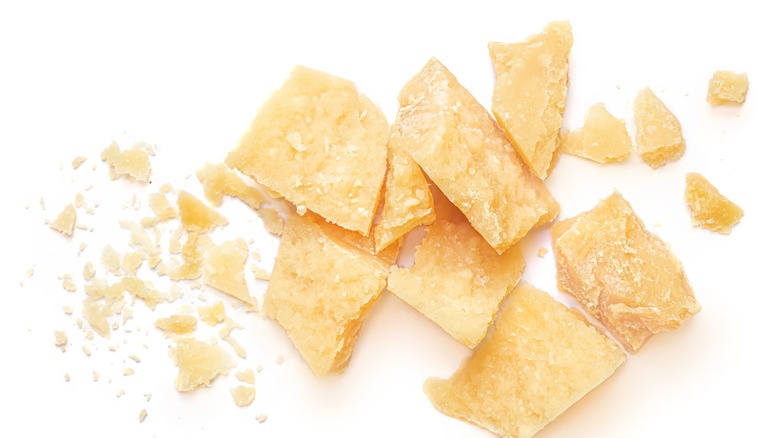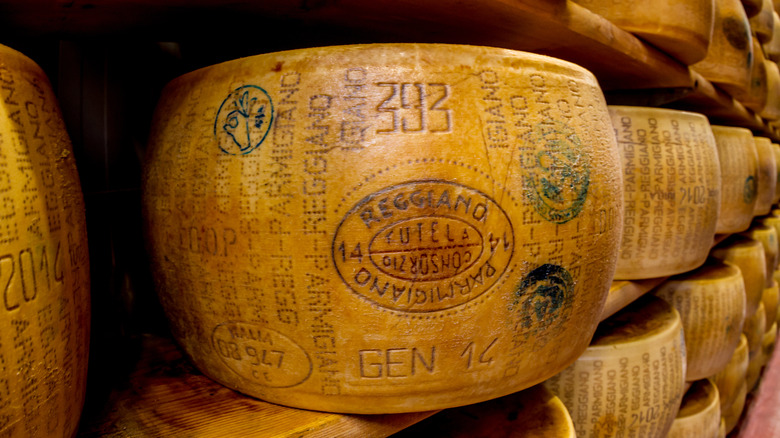What Gives Parmesan Cheese Its Bold, Salty Crystals
We may receive a commission on purchases made from links.
Parmesan cheese is a universally loved food. The salty, umami powerhouse cheese makes anything it touches taste better. That has to be some type of superpower, right? Parmesan cheese can be a crutch for any home cook or chef looking to make their meals tastier. When in doubt, sprinkle some parm on top, and balance is restored; it's that simple. But what gives parmesan cheese that irresistible, seriously addicting, salty, bold flavor with flavor crystals all throughout it?
It's fun to think of parmesan cheese being dug out of the mines like gold or diamonds in solid, delicious chunks of cheese. But in reality, the process is so particular and exact that there is a rigorous set of standards that follow in order to call parmesan cheese Parmigiano-Reggiano. Aka, the mother of all cheeses. Parmigiano-Reggiano is that perfect boldly salty crystal-filled cheese everyone knows and loves.
There is an institution called The Consortium of Parmigiano-Reggiano, or The Consorzio del Formaggio Parmigiano-Reggiano, in Italian, that regulates the cheese. Their intense regulation system ensures that all parmesan cheese has the same flavor profile and quality no matter where you buy it. The name Parmigiano-Reggiano guarantees the cheese was produced in one of these Italian provinces: Parma, Reggio Emilia, Bologna, Modena, or Manuta (via MasterClass). This is some serious cheese business! Here's a tip, always look for the name Parmigiano-Reggiano dotted on the rind. This is the obvious sign that you are buying the real deal.
Parmigiano-Reggiano - good things take time
The unique aging process gives the cheese its distinct nutty, salty flavor that creates those salty crystals. The crystals are known as tyrosine. Tyrosine is an amino acid formation found in an aged cheese due to the breakdown of proteins. Most parmesan cheeses for sale have been aged anywhere from 24 to 36 months, although there are more mature varieties as well that age over 40 months. That's where the funk comes into play. This lengthy aging process is what distinguishes legit Parmigiano-Reggiano from average parmesan cheese, which when produced in the United States, could be aged only 10 months. This is where you'll notice a less complex cheese, the underwhelming flavor speaks for itself.
During the aging process, the amino acids pile up and crystallize when free and in high concentrations (via The Consortium). The amino acids pile up during maturation through the breaking down of milk proteins by enzymes. This is the formation of those tasty salt crystals. The size and amount of crystals increase with longer maturation, a telltale sign of quality parmesan cheese.
Perhaps the most remarkable thing about this process is that it results in lactose-free cheese. Yup, that's right. Parmigiano-Reggiano is naturally lactose-free due to the glycolic process it goes through. Isn't science amazing? This way, everyone can enjoy the glorious world of parmesan cheese, dairy allergy or not. This is the long-winded answer to what gives parmesan cheese its bold, salty crystals. The short answer? Time.

